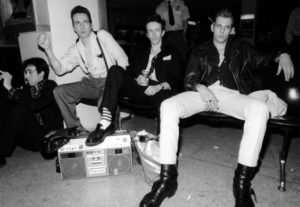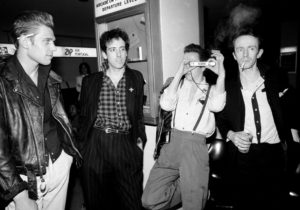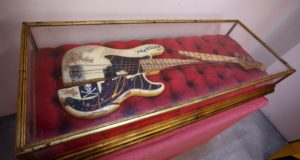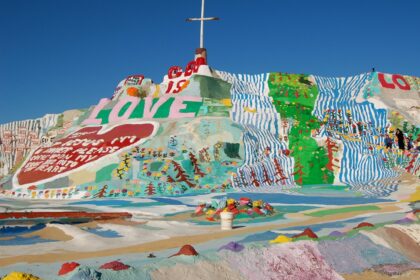London Calling is the third studio album by the English punk rock band the Clash. It was released as a double album in the United Kingdom on December 14, 1979, by CBS Records, and in the United States in January 1980 by Epic Records. Take a look below for 23 more interesting and fascinating facts about the Clash’s London Calling album.
1. London Calling incorporates a range of music styles, including punk, reggae, rockabilly, ska, New Orleans R&B, pop, lounge jazz and hard rock.
2. The subjects behind the album included social displacement, unemployment, racial conflict, drug use and the responsibilities of adulthood.
3. While working on the song “The Card Cheat,” the band recorded each part twice to create a sound as big as possible.
4. The final song on the album “Train in Vain,” was originally excluded from the back cover track listing. It was meant to be given away through a promotion with NME, but was added to the album at the last minute when the deal fell through.

5. The album received widespread acclaim and was ranked at number 8 on Rolling Stone’s list of The 500 Greatest Albums of All Time in 2003.
6. The album was a top 10 album in the United Kingdom, and its lead single “London Calling” was a top 20 single.
7. While recording the album, the band developed a disciplined daily routine of afternoon musical rehearsals followed by late afternoon social football games, which built a very friendly bond between the band members.
8. In August, 1979, the band went to Wessex Studio to begin recording London Calling.
9. The band asked Guy Stevens to produce the album, much to the dismay of CBS Records as Stevens had an alcohol and drug problem and his production methods were unconventional.
10. During a recording session for London Calling, Stevens swung a ladder and upturned chairs to create a rock and roll atmosphere.
11. The album was recorded during a 5 to 6 week period with 18 hour days. Most of the songs were recorded in one or two takes.
12. The album’s songs were generally written about London, with some having both fictional and real life characters, such as an underworld criminal named Jimmy Jazz.

13. The albums name was partially influenced by the March 1979 accident at a nuclear reactor at the Three Mile ISland in Pennsylvania.
14. The song “Brand New Cadillac,” was written and originally recorded by Vince Taylor and it was the first song recorded for London Calling.
15. “Rudie Can’t Fail,” is the albums fifth song and it mixes elements of pop, soul and reggae music. The song is about a young guy who is criticised for his inability to act like a responsible adult.
16. Strummer wrote “Lost in the Supermarket” after he imagined how Jones’ childhood could have been while growing up in a basement with his mother and grandmother.
17. “The Guns of Brixton” was the first of Paul Simonon’s compositions that the band recorded. It’s also the first song to have him sing as lead.
18. The album’s front cover has a picture of bassist Paul Simonon smashing his Fender Precision Bass, which is currently on display at the Cleveland Rock and Roll Hall of Fame, against the stage at The Palladium in New York City on September 20, 1979, during the Clash Take the Fifth U.S. tour.
19. Simonon said in a 2011 interview with Fender that he smashed the bass out of frustration when he was told that the bouncers at the concert won’t let the audience members stand up out of their seats.

20. In 2002, the photograph was named the best rock and roll photograph of all time by Q magazine as it captures the ultimate rock and roll moment, which is a total loss of control.
21. The cover artwork was designed by Lowry and was a homage to the design of Elvis Presley’s self titled debut album, with pink letters down the left side and green text across the bottom.
22. London Calling has been considered by many critics to be one of the greatest rock albums of all time.
23. In 2007, London Calling was inducted into the Grammy Hall of Fame, which is a collection of recordings of lasting qualitative or historical significance.




